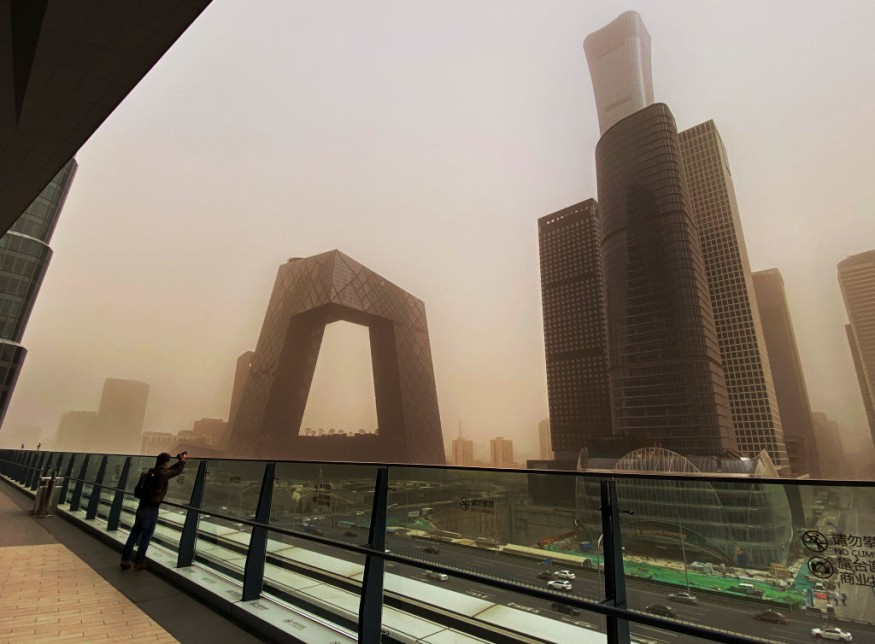The sun has turned blue, and the skies have turned yellow due to the second sandstorm to strike China in less than 14 days.
Blue sun in Beijing’s sand storm today. The left pic is the Forbidden City and the right pic is CBD pic.twitter.com/5CbDFHHjNZ
— ZhouLeiArt (@ZhouLeiArt) March 28, 2021
Sandstorm in China

Beijing was engulfed in dense dust which had incredibly high amounts of dangerous particles.
A dust storm that struck Beijing early Sunday morning pushed air pollution levels through the roof, making the sky yellow and turning the sun into a tiny dot in the sky.
Related Article : Dust Storm Caused by Northwest Winds Hits Beijing Earlier than Expected
Storm Duration

The storm was the second in less than two weeks to reach Beijing, with the authorities issuing a yellow alert (the second-lowest in a four-tier system) on Saturday. High winds were also forecast, and people were urged to remain at home if at all possible.
Winds from Mongolia's drought-stricken northwestern China fueled the sandstorm.
The sandstorm blurred the tops of several skyscrapers, limiting visibility in the area. When gusts of dust rushed across the streets, pedestrians were forced to cover their eyes.
Yellow Alert
On Friday, the China Meteorological Administration released a yellow alert. A sandstorm moved from Mongolia into northern Chinese provinces such as Inner Mongolia, Shanxi, Liaoning, and Hebei, which encompasses Beijing.
Air Quality Index
According to Beijing's real-time air quality index, air pollution levels reached a high of 500 as the sandstorm struck the city on Sunday morning. PM10 levels, which can reach the lungs, exceeded 2,000 micrograms per cubic meter.
PM2.5 levels, which are tiny particles that can enter the bloodstream, peaked at 462. The World Health Organization advises PM2.5 concentrations of no more than 25 on a regular basis.
Flight Troubles
According to the South China Morning Post, the storm caused chaos at Inner Mongolian airports, with more than half of Baotou and Chifeng's flights being canceled due to low visibility.
The latest sandstorms, according to the China Meteorological Administration, originated in Mongolia, where comparatively colder temperatures and less rain this spring resulted in greater areas of bare soil.
On Monday, China's Central Meteorological Observatory's chief forecaster, Zhang Tao, told the state-run People's Daily that "the dynamics for sandstorms and dust transmission are fine now."
According to Zhang, north and northwestern China saw less snow and rain this year, and temperatures have been higher since February, resulting in more drying and dusty conditions whipped up by more robust than normal winds.
Zhang said that the average temperatures in Mongolia and northern China were around 6°C higher than average in March.
Sandstorms in the East
Sandstorms have long plagued northern China as deserts extend farther south, with deforestation increasing in frequency during Mao Zedong's Great Leap Forward from 1958 to 1961.
What Caused the Dust Storms

Deforestation on a broad scale is often believed to be a cause of China's dust storms. Beijing has attempted to create air corridors that redirect the wind and allow sand and other particles to flow through more efficiently and plant a "huge green wall" of trees to capture incoming dust.
For more environmental news, don't forget to follow Nature World News!
© 2026 NatureWorldNews.com All rights reserved. Do not reproduce without permission.





